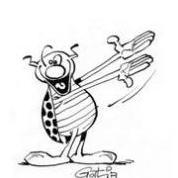Leaderboard
Popular Content
Showing content with the highest reputation on 08/08/2021 in all areas
-
I added a trio to the minuet i composed recently. I found recording myself playing gave me performance anxiety and caused continuous mistakes. It was quite frustrating but I managed to get a somewhat decent recording with only a couple of minor mistakes. The minuet is Haydnesque but I experimented with the trio. I used doubled thirds to sound like a trumpet fanfare which is answered by the strings. A back and forth ensues which leads to a waltz like dance over a tonic pedal. I bought a book of minuet and trios recently by Haydn. In the first two minuet and trios of the book Haydn keeps the same key throughout the minuet and trio which i thought was unusual but uses tonicisations to add colour. I did the same and modulated briefly from F major to G minor in the B section of the trio rather than the relative minor to add more tension with the A section trumpet motif. I'm not 100% sure the trio works but I spent hours at the piano trying out many different approaches to create something new. In the score, one thing to note that bars 4 and 17 have two accidentals that are overlapping which obscures what they are, a B natural and an A flat.3 points
-
Hello everyone, I composed another short piece for strings. This was composed based on the second movement of Beethoven's string quartet No.15, but the aural similarities are less obvious and it turned out more personal than the last short piece. Beethoven's original piece is a really interesting Minuet and Trio. I have only analyzed the A part of the first Minuet so far, but since the structure was so interesting I decided to compose something with the same structure. The piece is based on two melodies counterpointed against each other following an harmonic sequence. I created a bass and a melodic figure for following a two step harmonic sequence: up a major second and down a perfect fifth. The whole piece, until the end, follows the harmonic sequence and melodies (except for a short bridge). The beginning of the piece is the statement of the bass melody in octaves at the beginning of the piece (Beethoven got this idea from a piece by Mozart which he used as a model for his own: Mozart's string quartet K.464 Minuet). My piece looks more like a free Adagio for Strings than a Minuet. However, is was composed as a part A of a binary or ternary form, so it cadences in the dominant tonality. I might compose a part B in the future but I am not sure. I was neglecting sequences and composing always in a free manner and this is the first time I consciously try to stick strictly to a predefined sequence and melodic motives. Let me know what you think! I am unsure about the sudden long I64 sustained chord at the end, so if you have any though about that let me know too! Thanks for listening and hope you like it!1 point
-
Here is a simple piece for piano and oboe. I tried to convey the feelings of a weary man sitting down to look back at what he's been through. The first (and last) section mm. 1-21 is written to be invertible. I was wondering if I should write one more section, with variation on the melody for the oboe, to kind of "justify" the presence of the oboe, who is merely an "echo" of what the pinao has already said so far. That was my original plan, but I felt as I was writing it that this actually sounded like a good place to stop. Made the journey a bit shorter, but maybe that's better, I'm curious about your opinions. Also, do you think it needs an intro/prelude section before introducing the main melody? Would love to hear your comments about it 🙂1 point
-
Really great job! I think the modulation to G minor is convincing and it also happens to be a key which is easy to utilize to bring you back to F major. I think the trio has the proper characteristics and I can imagine trumpets and horns playing in octaves. Thanks for sharing and looking forward to more!1 point
-
1 point
-
Really nice! The melodies are catchy, and the voice-leading is very well crafted. Congrats!1 point
-
You should upload a sound file. It's hard to judge music without listening to it. You also didn't mention which style you are trying to write in, so that makes any technical feedback very hypothetical too. But in general, canonic imitation normally involves counterpoint. From a distant look at the score, we can see several hints that your piece goes against the most general principles of good counterpoint: not much rythmic contrast, a lot of parallel motion; not much voices independance. Visually, it doesn't look like counterpoint which is puzzling for a canon. When the violoncello enters, it plays the same melody as the violin, on the same beats; this is not canonic imitation (you need to shift it by a time interval). Here you are simply doubling the voice, which is quite redundant, especially in a small ensemble. For the rest, I didn't go into details, because it also depends on the style you want to emulate, but there appears to be some errors. Melodically, you have some problems (A2nds, the line doesn't imply clear harmonic motions, repeated notes, and I'm not sure about your use of leaps but I would need to hear how it sounds). As the other commentors have mentionned, your intervals are not properly treated as well (as said previously, parallel 5ths and 8ves, dissonances not resolved in the "right" way). I think you need to study counterpoint before trying to write canons. Or start with 2 voices rather than 4. It seems you could benefit from a more gradual approach1 point
-
It sounds delightful and with a strong structure. It has also catchy motifs, the way Haydn used to write, like what sound in measure 32 - 33....1 point
-
Hello everyone, This is a short string quartet I just composed. However, I would not call it my own since it is strongly based on the introduction and first part of the exposition from Beethoven's string quartet No.15 Op 132. After a long musical hiatus I found some time again for studying music. Sadly, I will be able to study only around an hour per day so, since It would take me ages to compose an original piece like that, I decided to focus for sometime on analyzing pieces and "copying them out" through exercises like this one. As I said, the piece has been composed as a way of practicing and most ideas are based (strongly) on the original piece. Of course, it would not make sense to just copy things out so I recomposed them with my own melodies and motives (even though most motives are also similar). The exercise has been composed with no clear structure in mind. However, the structure could be understood as a "weird" exposition of the first theme of a sonata which ends up being played in the relative major instead of the original key. m.1-10: Introduction. Really similar to the original quartet from Beethoven but I started with a different motive and developed the choral-like counterpoint accordingly. There are two interesting features: three uses of the augmented second interval in m.3, m.6 and m.7, and a Neapolitan chord (tritone substitution) in m7. m11-15: Introduction of the first theme in original key (Am) but moving rapidly to Dm. m.16-22: First theme again in original key of Am but stopping abruptly. m.23-31: The same theme, this time stated more assertively but in Cmaj, the relative major (here, the viola and cello accompaniment are based on the accompaniment of the second theme from Beethoven's original quartet). Since improving without any feedback is not easy, I share this here in case anyone has anything to comment on. Any feedback is more than appreciated. Thank you!1 point
-
In the next to the last bar, the harmony would sound stronger with a seventh in the D chord, and would avoid the parallel octaves between oboe and viola. I would change the viola's A to a C. Cheers, Jer1 point
-
The Lacrimosa for piano quartet was composed in 2019. It was written in reaction to the April 2019 Notre-Dame de Paris fire, an event that shocked me to such an extent that I felt compelled to put my feelings about it into music. The fact that one of the greatest architectural monuments in European history was suddenly getting destroyed was horrifying to me, especially considering that at the time, it was unknown how much of the building would actually survive. This performance is a remote recording - that is, a recording where the musicians involved record each track separately, often times in different locations, as in the case of this recording. The artists are Javier Orman from AirGigs on the violin, JonathanCello from Fiverr on the cello and viola (the latter line played on the cello), and myself at the piano; these musicians were absolutely fantastic to work with. Here are the links to their professional pages: https://www.javierorman.com/ https://www.fiverr.com/jonathancello/... I hope you all enjoy. 🙂1 point
-
Here is a invention for wind trio that composed. My original idea was to compose a set of inventions for this instrumentation, but depending on how others like it, I may or may not do so. How does it sound? Any feedback is welcomed!1 point




.thumb.jpg.c0a72d70ca19ec34c5702ec7e7951f37.jpg)
.thumb.png.8b5b433a341551e913a34392660bc95b.png)


